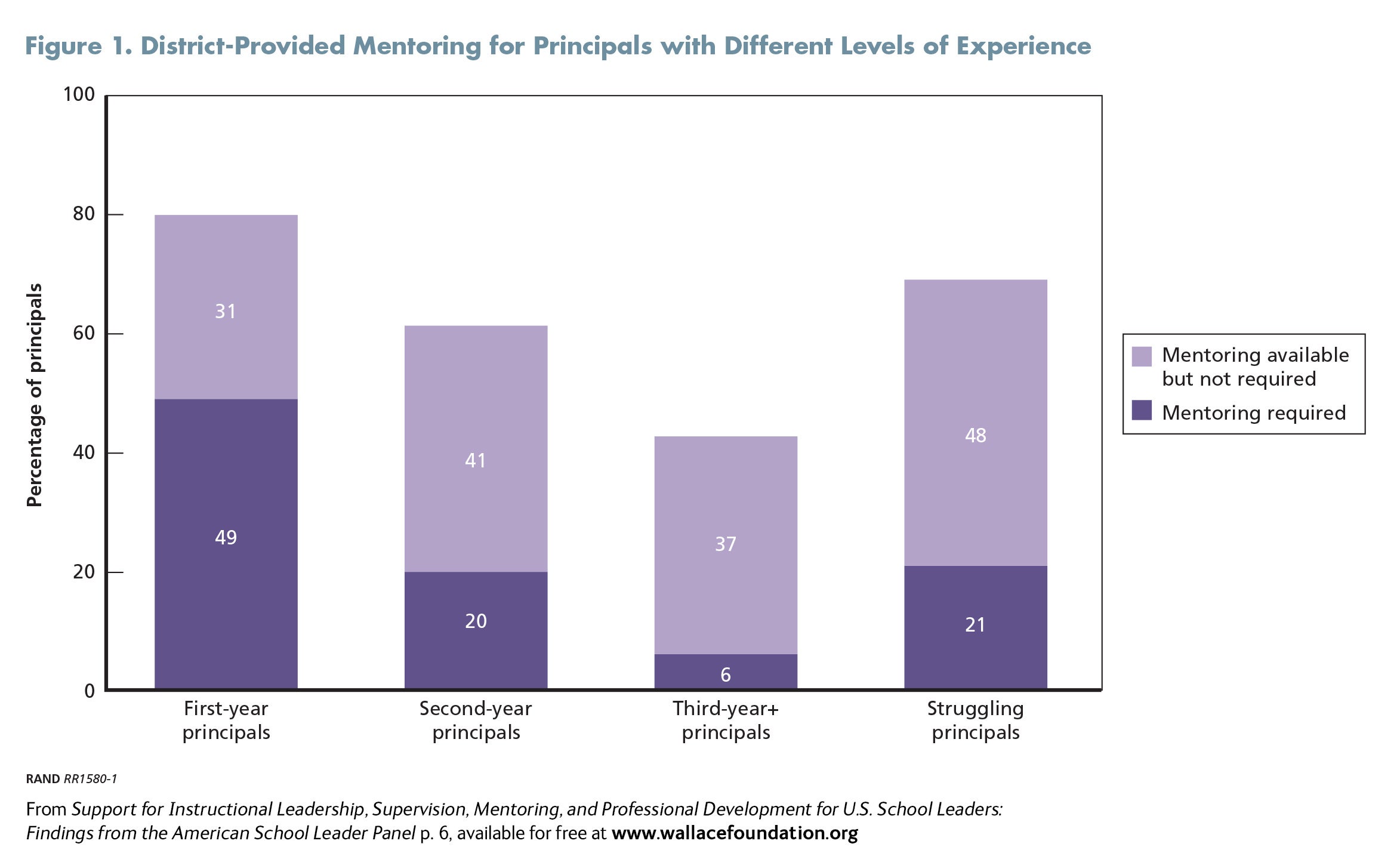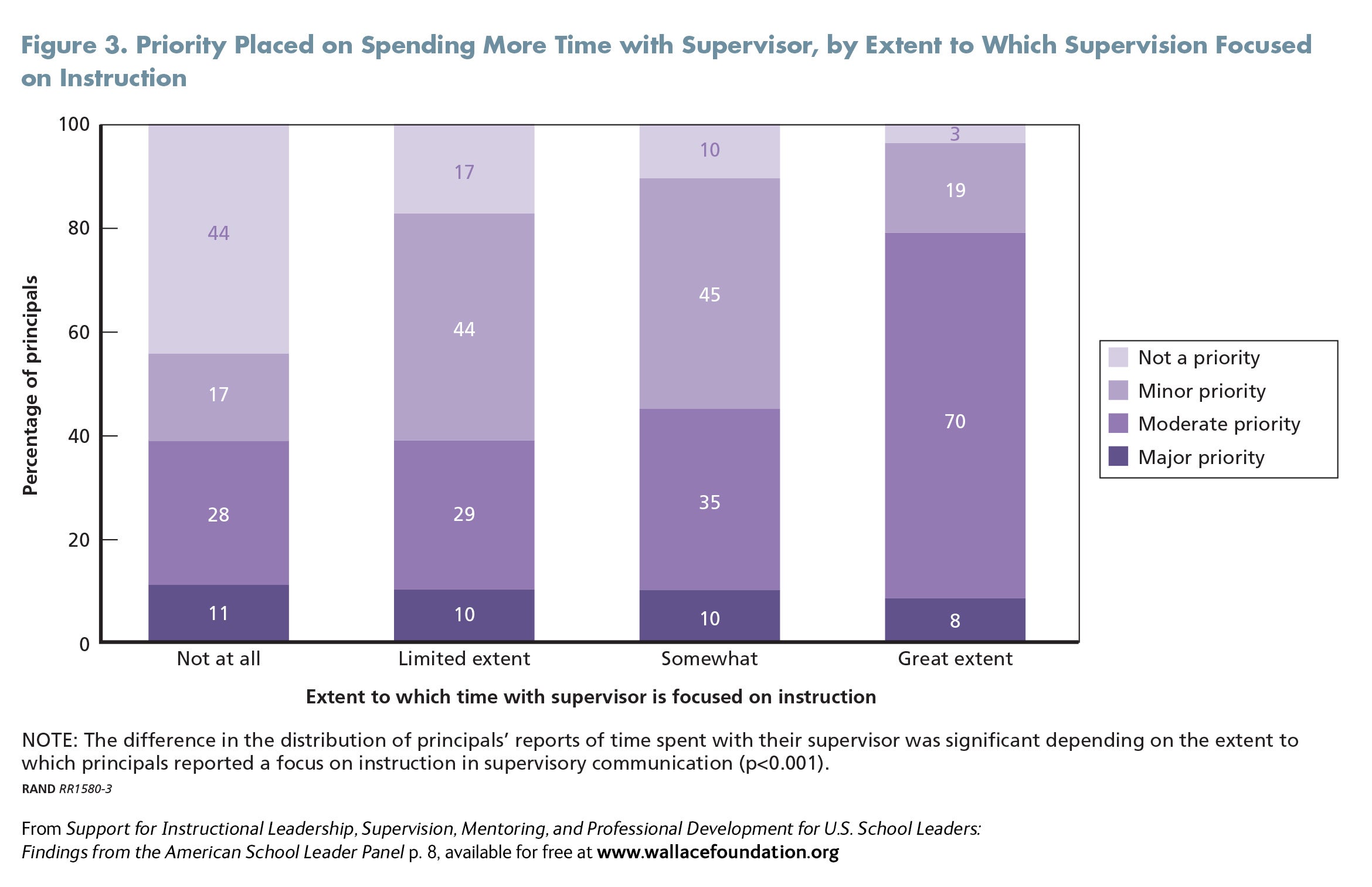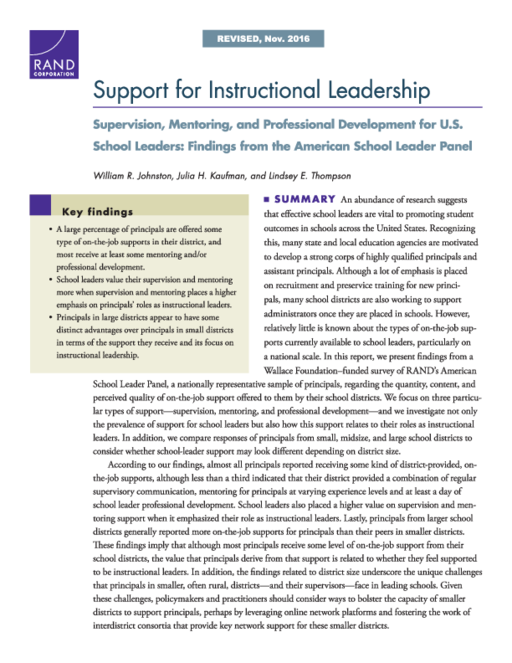Breadcrumb
- Wallace
- Reports
- Support For Instructional Leader...
Support for Instructional Leadership

Overview
More
Less
- Author(s)
- William R. Johnston, Julia H. Kaufman, and Lindsey E. Thompson
- Publisher(s)
- RAND Corporation
- DOI Link
- https://doi.org/10.7249/RR1580-1
Summary
With school leadership second only to teaching among school-related influences on student learning, principals can play an important role in school success. But how do their districts promote their effectiveness, especially in improving teaching?
Based on a survey of the American School Leader Panel, a representative sample of principals from across the United States, this report explores the prevalence and quality of three important on-the-job supports for school leaders: supervision, mentorship and professional development (as defined by at least a day focused on principals). The good news is that two-thirds of principals report receiving some support. The bad news is that more than two thirds (68 percent) report that they don’t receive all three sources of help.
Mentoring, for example, is typically available only to first- or second-year principals or those encountering difficulties on the job, and only a minority of principals report that their districts require mentoring, even for first-year (49 percent of respondents) or struggling principals (21 percent).
Also, the prevalence of support a principal receives may depend on the size of his or her school district. Both mentoring and professional development are more readily available in larger and medium-sized districts than smaller ones.
The value principals place on the support they receive is linked to whether the support emphasizes the key aspect of principals’ job—improving teachers’ instruction. For example, all of the principals (100 percent) who reported that their mentors focused on instruction to a great extent also said that they prized the mentoring. That compares with a minority (40 percent) of principals who said their mentors devoted little to no time to instruction.
Visualizations



